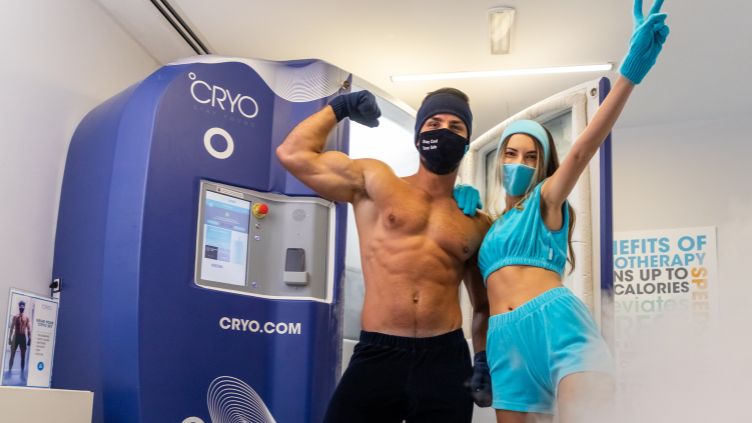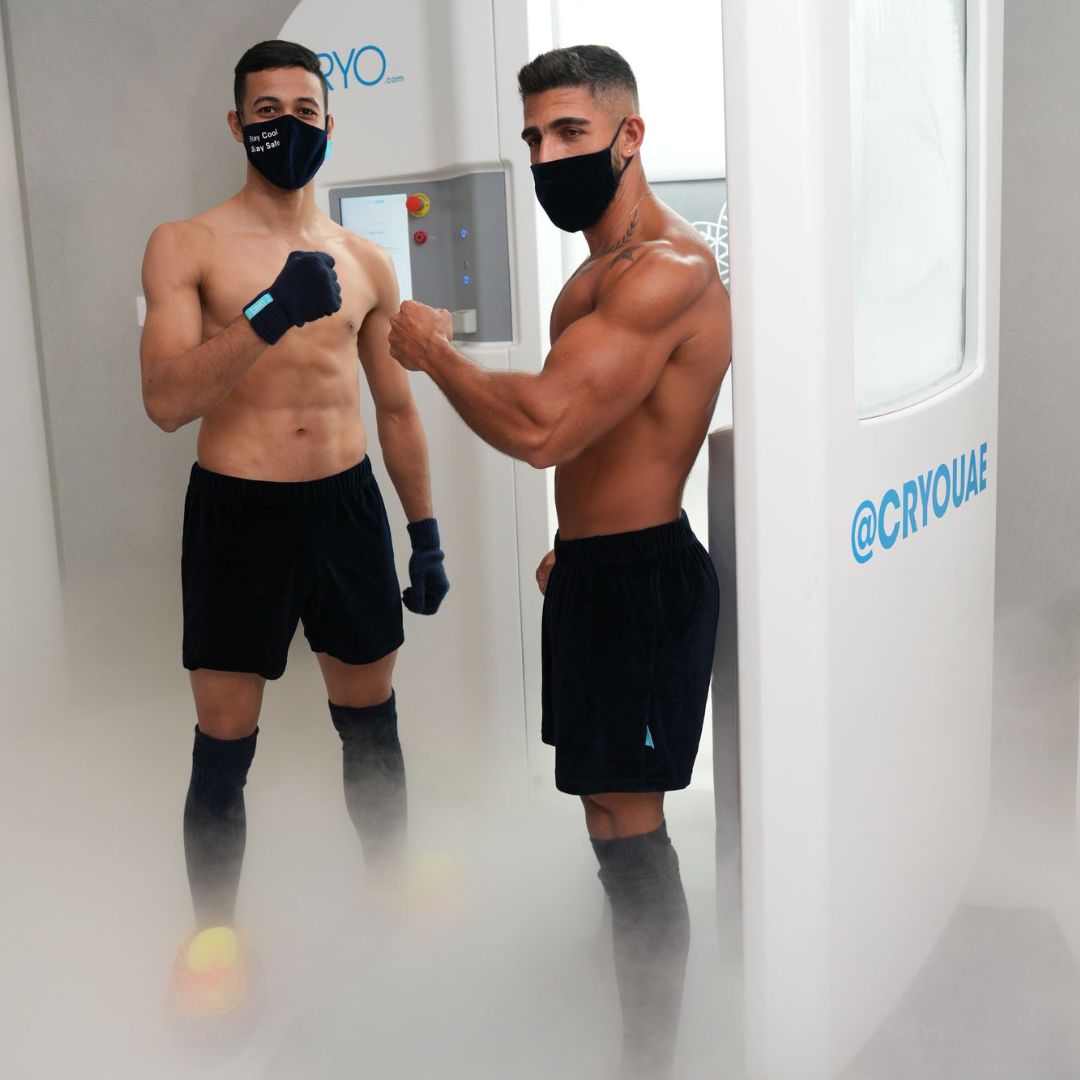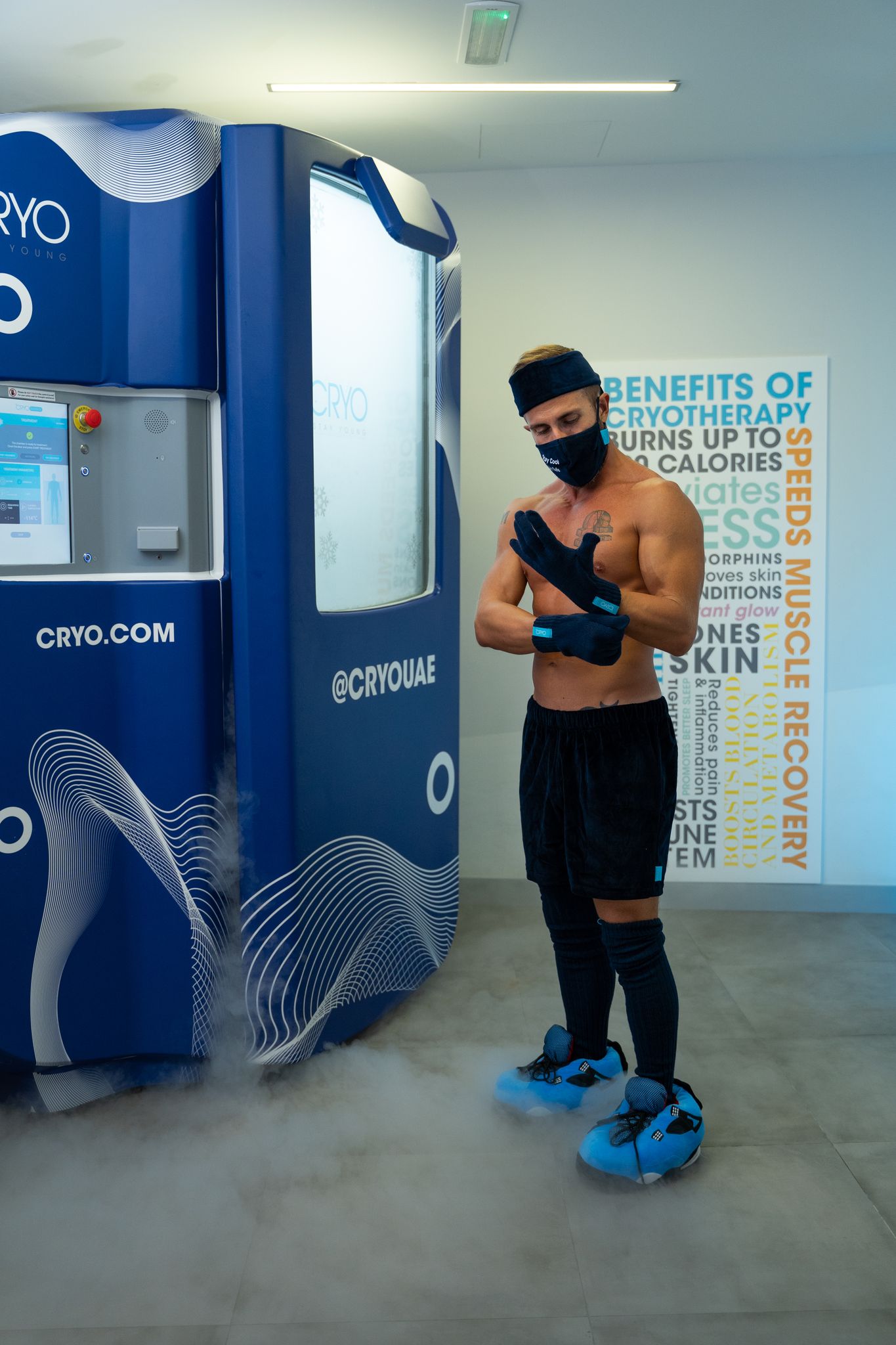Why is -140°C/-220°F the Optimal Treatment Temperature of Whole Body Cryotherapy?
Available in UAE, Kuwait, Thailand, Bahrain, Australia, Hong Kong
Whole body cryotherapy (WBC) has been used in clinics all around the world for over 40 years. [2,3] Primarily the therapy has been used as a method of physical recovery in hospitals and clinics. However, it is now becoming a mainstream application in sports recovery, beauty, and rejuvenation commonly found in rehabilitation & wellness clinics, gyms, and spas. Equipment used for WBC comes in many options often leaving future customers puzzled with the question of which solution is best for their particular purpose. One of the parameters which is often taken into consideration is the range of temperatures that a device delivers. Cryochambers offer a variety of options here. From about -85°C/-121°F which is found in common cryosaunas, through -110°C/-166°F found in some electric multi-person chambers to an impressive -140°C/-220°F found only in very few devices. Therefore the big question which continues to create controversy in the market is – What is the optimal temperature of Whole Body Cryotherapy? To begin, let’s find out a little more about the treatment.

Cryotherapy as a treatment consists of “supercooling of the skin surface to the level of -2°C” in order to “stimulate cold receptors of the patient’s skin” which in turn positively affects internal organs. [3] The two key parameters which measure the effectiveness of WBC in achieving this goal are the temperature of the treatment and the duration the user is exposed to ultra-low temperatures. What is consistent in treatments across the globe is the duration ranging from 2-3 minutes, since “procedures lasting less than 2 minutes do not form therapeutic effects”. [1] However, what is inconsistent throughout devices produced by various manufacturers is the ultimate temperature their devices achieve. What did cryotherapy look like in the past?
At the very early beginnings when whole body cryotherapy first arrived on the market as a treatment for physical rehabilitation, temperatures ranged from around -175°C/-283°F to -160°C/-256°F. However, manufacturers began “increasing the operating temperature of the equipment, [in order to] significantly reduce the cost of its production.” [1] This resulted in many companies producing machines at an average operating temperature of -80°C/-112°F, far higher than the temperature used in the 90’s for rehabilitation.
A recent research report states that “Unreasonable changes in WBC technology affect the effectiveness of the procedure”. [1] The recent change in temperature has caused a flood of articles “which express doubt that cryotherapy can provide the healthcare effects described in papers published before 1990 [4, 5].
“The reason that many modern WBC systems are not able to provide the conditions for obtaining the healthcare effects described in the last century is the increase in gas temperature.” [1]
Considering patients’ average body shell measurements and the temperature of the treatment, a drastic increase in temperature from -170°C/-274°F to -110°C/-166°F, without a doubt affects the degree of supercooling the user’s body surface during treatment and ultimately negatively impacts the effectiveness of the treatment. One article prompts that the recent trend to move away from nitrogen power has caused devices to become 10 times less efficient than the original devices used before the 90s. This is because many of these new WBC devices are unable to reach temperatures low enough to deliver positive effects on the human body. [4]
A recent study at ITMO University in St. Petersburg considered the duration of the analgesic effect as their main criterion for testing and optimizing the efficacy of WBC on a physical basis. The basis of the study was set at a temperature of 140 K (-133.15°C/-207.67°F), resulting in a maximum analgesic effect of 325 mins post-treatment. The results of the computational experiment simulating the cooling of the body surface proved that at temperatures warmer than 140 K (-133.15°C/-207.67°F) WBC efficacy rapidly decreases, and at temperatures colder than 140 K (-133.15°C/-207.67°F), WBC efficacy also gradually decreases.(Figure 1)

During this study tests at temperatures of 160 K or -113.15°C/-171.67°F were comparable to other tests performed by doctors in sports medicine [5] which compared WBC at a temperature of -110°C/-166°F to ice baths with a temperature of 8°C/46.4°F, proving no advantage for WBC as they resulted in similar body shell surface temperature. [1]
From this study, the results were clear that the advantages of WBC begin at temperatures lower than -110°C and peak at -130°C, with a minimum treatment duration of 120 seconds.
Thus it can be argued that effective WBC treatment temperature should not be higher (warmer) than -130°С /-202°F , with a minimum procedure duration of 120 seconds. [1]
[1] Alexander Baranov, Oleg Pakhomov, Alexander Fedorov, Vladimir Ivanov, Andrew Zaitsev and Ruslan Polyakov. Technique and Technology of Whole-Body Cryotherapy (WBC) Saint Petersburg National Research University of Information Technologies, Mechanics and Optics 2019
[2] Yamauchi Y, Yamauchi T, Miura K. The analgesic effects of -170°C whole body cryo-therapy on rheumatoid arthritis (R.A.); curable. Pain. 1987;30 (Supp. 1): S261
[3] Yamauchi T, Yamauchi Y, Miura K, Cooper A. Clinical effects of -170°C whole body cryotherapy (W.B.C.T.) on steroid dependant chronic diseases. Journal of Steroid Bio-Chemistry. 1986; 25(Supp. 1):25
[4] Baranov AY. Low-temperature installations for medical purposes. In: Part 1. Apparatus for General Cryotherapy Treatment: (Textbook). St. Petersburg: University ITMO; IHBT; 2016. p. 178
[5] Costello JT, Donnelly AE, Karki A, Selfe J. Effects of whole body cryotherapy and cold water immersion on knee skin temperature. International Journal of Sports Medicine. 2014;35:35-40




